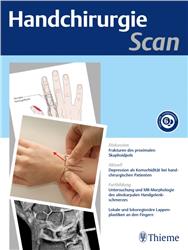Trapeziometacarpal Joint Osteoarthritis
Diagnosis and Treatment
| Auflage | 2018 |
| Seiten | 104 pp., 64 illus. |
| Verlag | Springer |
| ISBN | 9783319443348 |
| Artikel-Nr. | 558918 |
Lieferzeit ca. 5 Werktage
Produktbeschreibung
This book describes the anatomy and biomechanics of the trapeziometacarpal joint and explains the pathogenesis and treatment of trapeziometacarpal joint osteoarthritis, also known as rhizarthrosis. The discussion of treatment sets out both conservative and surgical approaches, clearly explaining the indications for the various options, as well as their advantages and disadvantages. The trapeziometacarpal joint is a phylogenetically recent articulation that permits the pinching movements of the index finger and thumb so important in daily activities. Degenerative disease involving the trapeziometacarpal joint is an important disabling condition that affects predominantly females over 50 years old. Although a number of treatments are now available, there is no single gold standard. Conservative treatments can control pain yet are unable to halt progression of the articular aging, while none of the surgical solutions employed when conservative treatments prove insufficient can be considered perfect. For example, use of a spacer can restore strength but does not always completely alleviate pain while arthroplasty eradicates pain within a few weeks but cannot restore strength. In thoroughly reviewing the available treatments, this book will enable the practitioner to select the best option for the individual patient.
Fachzeitschriften

Bleiben Sie informiert!
Melden Sie sich für den frohberg.de-Newsletter an und nutzen Sie jetzt Ihre Vorteil:- Willkommens-Dankeschön: Beatmungsmaske Rescue Me
- Aktuelle Neuerscheinungen und Empfehlungen
- Exklusive Angebote und Kongress-Highlights









